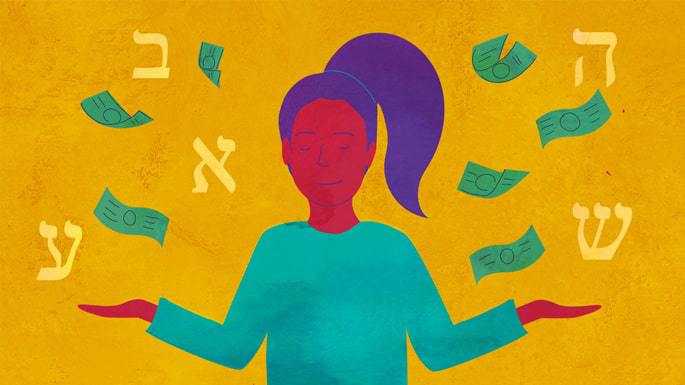“Money doesn’t buy happiness,” someone told me the other day, as I rolled my eyes and internally chuckled at one of the oldest clichés in the book. But then he added, “But money does buy a jet ski. And have you ever seen anyone not smiling on a jet ski?”
So does that mean it's not true?
Of course not. It’s just hard to keep front and center of our consciousness. And the more successful we are (thank G‑d), the harder it becomes to not get carried away with the satisfaction and perceived security that financial stability can bring.
It’s specifically at those times that it’s most important to remember the truth: there is more to life than financial success.
How do we keep that in mind?
By keeping conscious of where the money really comes from.
A Flour Offering that Doesn’t Rise
Parshat Tzav contains many details about sacrifices. Most of them were animals, but one type of sacrifice described in our parshah was the minchah offering, made of flour and oil. And like many animal sacrifices, the entire flour offering wasn't consumed on the altar; much of it was left behind for the priests to eat.
The way it worked was the priest would take out a fistful of flour that was then offered on the altar. One unique feature of this flour offering was that much like the matzah we eat on Passover, it wasn’t allowed to become chametz—leaven.
The portion of flour not offered on the altar was left for the priest and his family, who would eat it. They were required to handle the holy flour mixture with the reverence afforded to all sacrificial food (e.g., not eating it while ritually impure). In other words, even the part eaten at home was a sort of quasi-sacrifice.
It is in this context that the Torah warns that just like the offering burned on the altar, the portion eaten at home couldn’t become chametz:
And Aaron and his sons shall eat whatever is left from it. It shall be eaten as unleavened bread in a holy place . . . It is a holy of holies, like the sin offering and like the guilt offering.1
What is the significance of this detail? Why was the part consumed by the priests given the same status as the part burned on the altar? They’re not the same thing—one was to G‑d, the other was eaten by humans?
Holy Life and Regular Life
The simple answer is because they should be the same: The part we eat should absolutely be the same as the part offered to G‑d.
To explain, we must understand this entire story of flour offering as a metaphor for Jewish life in general.
You see, there are those times akin to the small fistful burned on the altar to G‑d. These are the times when we pray, do a mitzvah, give money to charity, or do a favor for someone.
And as it worked in the Temple, so it does in our lives. As you recall, once the portion was offered to G‑d, the priests were allowed to eat the rest of the flour offering in their private homes in a state of quasi-sanctity. So it is with us: when we take the time to engage in those holier, spiritually charged moments, it gives a stamp of approval for the rest of our private day.
In other words—when done properly—the more spiritually attuned times of our day influences the rest of the day and render it as part of a broader picture of a person whose life is devoted to G‑d.
Private Life Shan’t Become Chametz
It is here the notion that the portion eaten at home cannot become chametz is important:
When life is such that there are parts offered to G‑d and other parts only “eaten in sanctity” but still largely “regular” and “me-time,” it’s easy to fall into the “chametz trap.”
What’s the “chametz trap?”
Chametz is famously puffed up, a fully risen loaf of bread—representing ego and self-reliance.
So, when you’re doing spiritual stuff, it’s relatively easy to avoid chametz. When contemplating G‑d, it’s not so difficult to avoid ego and that sense of “I’m in charge, and I’m the product of my own success.”
But when you’re going about your regular day, well, that’s you. You’re making it all happen, and it’s easy to forget G‑d and let the ego come roaring in.
You’ve fallen into the chametz trap.
The Torah reminds us that even the part the priests ate on their own must not become chametz. The private “me moments” of life are also ultimately part of a wholesome life dedicated to something higher, and they should be conducted with humility and G‑dly awareness.
Money Doesn’t Buy Happiness. G‑d Does
Should a person sit at home and pray all day, waiting for G‑d to shower you with goodness?
Of course not.
Work hard, and absolutely make a broad, wide-open receptacle through which you can receive G‑d’s blessing. Like the flour sacrifice, only a portion of it was actually consumed on the altar for G‑d, so don’t get carried away turning into a secluded saint or an ascetic who needs nothing. There was a whole portion eaten at home, in the priest’s private dining room. So you do the same.
But remember not to let it become chametz. Retain the humility that comes with being devoted to G‑d the entire day. Render your entire day an act of divine service. Yes, as you close that multi-million dollar deal you’ve been working on for three years, you remember that it’s G‑d who’s guiding you here, not just your own brilliance.
And then, your entire day is holy, free of any trace of chametz.2






Thank you Rabbi Aharon Loshcak for sharing this teaching with us.
Reminds me of the story Rabbi Telushkin shared in one of his books of the business man who was doing his daily calculations. When it came to the bottom line, he wrote as he remembered it is all Hashem. We need not separate our daily functions into G-dly and existence. It's all G-dly.